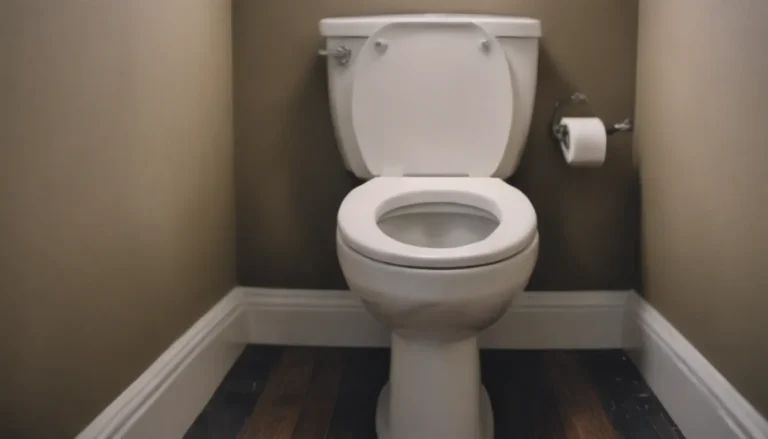Comprehensive Guide to Understanding Electrical Grounding

Are you puzzled by the concept of electrical grounding in your home? Don’t worry, you’re not alone! Grounding is a crucial principle in electricity that ensures safety and efficiency in your home wiring system. In this in-depth guide, we’ll walk you through the basics of electrical grounding, how it works, and why it’s essential for protecting your home and appliances.
What Is Electrical Grounding?
Electrical grounding provides a safe route for excess electricity to flow back to the ground in the event of a fault in the wiring system. It acts as a backup pathway that helps prevent electrical fires and shocks by directing stray currents away from sensitive components. In simpler terms, grounding ensures that electricity always has a safe path to follow.
Understanding Electrical Flow
Before diving into the specifics of grounding, it’s important to grasp the basics of how electricity flows in your home’s wiring system. Electrical current consists of a flow of electrons through metal circuit wires, with negative and positive charges creating an electrical field. This charged current is generated by utility company generators and travels through high-tension service wires to reach your home.
The flow of electricity seeks to return its electrons to “ground,” which is essentially discharging its negative energy and reaching equilibrium. Under normal circumstances, the current returns to ground through neutral wires in the electrical system. However, if there’s a breakdown in the wiring pathway, such as a short circuit, the hot current may flow through unintended materials like metal or wood, posing a risk of fire or electric shock.
The Home Grounding System
To mitigate these risks, your home’s electrical system includes a grounding system that runs parallel to the hot and neutral wires. This system consists of bare copper wires that connect to devices and metal electrical boxes throughout your home. These grounding wires provide an alternate pathway for stray current to flow back to ground, preventing potential hazards.
In modern wiring systems, bare copper grounding wires are integrated into sheathed cable and terminate in a grounding bar in the main service panel. This bar is connected to a grounding rod buried deep into the earth outside your home, offering a low-resistance path for stray currents to dissipate safely. You can identify the presence of a grounding system at each outlet receptacle by the third round slot, which indicates the grounding connection.
Types of Grounding Systems
Not all homes have the same type of grounding system. While newer homes typically feature a comprehensive network of bare copper grounding wires, older systems may rely on metal conduits or cables for grounding. Homes built before 1940, especially those with knob-and-tube wiring, may lack any form of grounding altogether.
If your home has outdated wiring without proper grounding, it’s advisable to upgrade to a more modern system to enhance safety. Look out for outlet receptacles with only two slots, as this may indicate a lack of grounding. Updating your wiring system can provide peace of mind and ensure the protection of your home and appliances.
Additional Safety Devices
In addition to grounding, your home wiring system includes safety features like circuit breakers or fuses to protect against electrical hazards. These devices prevent wires from overheating due to an overload of current and respond to short circuits by interrupting the flow of electricity. Metal plumbing pipes in your home may also be connected to the grounding pathway, offering added protection against electrical contact.
Importance of Appliance Grounding
Many plug-in appliances and tools feature a third prong on their cord plugs, designed to fit into grounded outlets. This grounding prong is essential for safety, as it ensures that the appliance has a direct connection to the grounding system. Cutting off or bypassing the grounding prong can pose serious risks, including electric shock and fire hazards.
Tips for Using Plug Adapters
If you encounter older outlets with only two slots, you may consider using plug adapters to accommodate three-prong plugs. However, it’s crucial to use these adapters with caution, as they only offer grounding protection when properly installed. Ideally, three-prong plugs should only be plugged into grounded outlets to ensure safety.
In cases where grounded outlets are unavailable, installing a GFCI receptacle can provide some level of protection against ground faults. While a GFCI doesn’t create a grounding pathway, it can detect and shut off power in dangerous situations. Be mindful of the limitations of using GFCIs as a substitute for proper grounding in older wiring systems.
Conclusion
Understanding electrical grounding is essential for maintaining a safe and functional home wiring system. By grasping the basics of how electricity flows and the importance of grounding, you can safeguard your home against potential hazards. Whether you’re updating an older wiring system or ensuring your appliances are properly grounded, prioritizing electrical safety is key to protecting your home and loved ones.
For more information on electrical safety and home wiring, consult reputable sources such as the International Association for Fire Safety Science and the Occupational Safety and Health Administration. Stay informed and proactive in maintaining a secure electrical environment in your home.
References:
– International Association for Fire Safety Science
– Occupational Safety and Health Administration, U.S. Department of Labor
– Editors of Cool Springs Press. Black and Decker: The Complete Guide to Wiring, Updated 7th Edition. Cool Springs Press, 2017.
Remember, when it comes to electrical safety, knowledge is power. Stay informed, stay safe!





